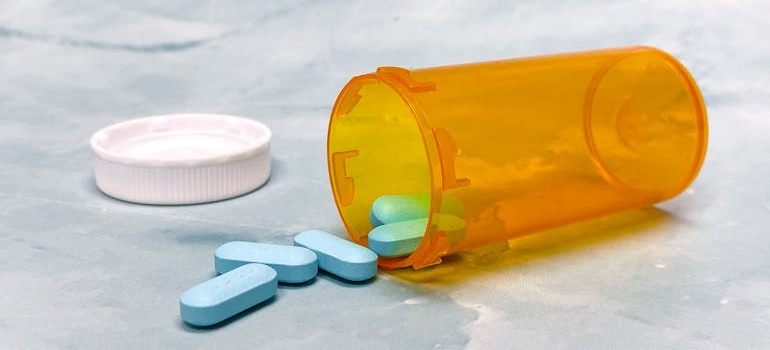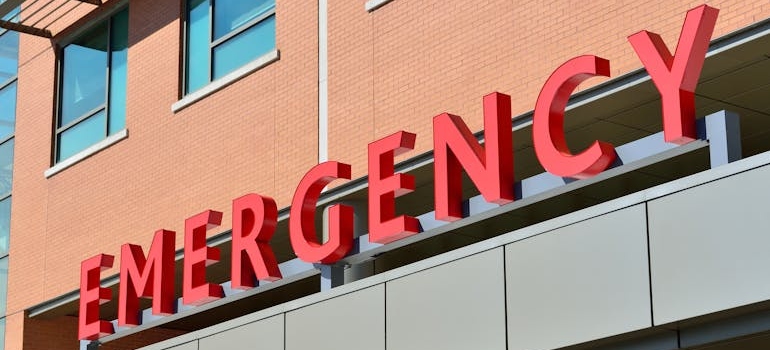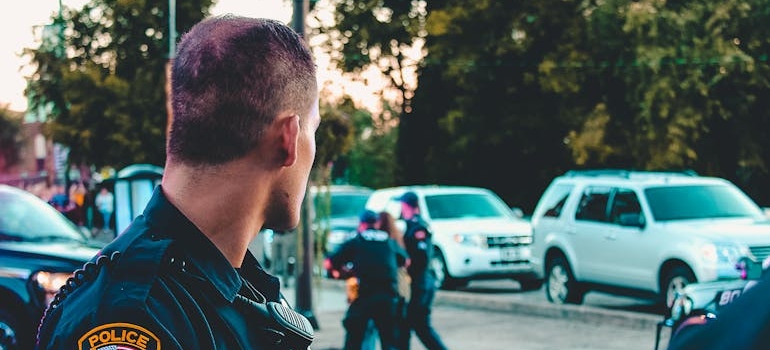What Are Blues Drugs and Why Are They So Dangerous?
You may have heard the term “blues” on the news or in conversations, but not everyone knows what it means. If you’re wondering what are blues drugs, they’re often small blue pills that look like prescription medicine but can be deadly. Many contain fentanyl, a powerful opioid that can cause overdose even in tiny amounts. These pills are spreading fast, and people of all ages are at risk. Knowing the truth can help you protect yourself or someone you care about. If you or someone you love is struggling, getting help early can save lives. An addiction treatment center in Pennsylvania can provide the medical care and support needed to recover. The more you know, the better prepared you are to take the right steps toward safety and recovery.
Jump to Section
What Are Blues Drugs?
If you’ve been wondering what are blues drugs, they’re small pills often pressed to look like real prescriptions. The problem is many are fake and contain fentanyl, which can kill in tiny amounts. People often search what drug is called the blues because the name causes confusion. In reality, they’re often linked to opioid abuse and overdose deaths.

Some people think they’re taking legitimate painkillers, but these counterfeits are dangerous. Asking what are blues drug isn’t just about curiosity — it’s about protecting yourself. If you or someone you know is using them, finding help fast matters. A prescription drug addiction treatment program can provide medical support, therapy, and relapse prevention. Knowing what are blues drugs and their risks is the first step toward avoiding tragedy and finding the right path forward.
The Origin and Types of Blues Drugs
Many people ask what are blues drugs and learn they started as legitimate prescription painkillers. Over time, counterfeit versions spread on the street, often laced with fentanyl. These pills are usually small, round, and stamped to look like brands such as oxycodone. They can vary in strength and content, making them unpredictable and deadly.
Street dealers produce them cheaply, so they’re easy to find. Some users research what are blues drugs after hearing about overdoses in their community. Others wonder what drug is called the blues when they see the pills for sale online. No matter the source, the risk is the same. If addiction has already started, a drug rehab Newburgh NY program can help. Understanding the types of blues drugs can help you recognize them and avoid life-threatening mistakes.
How Blues Drugs Affect the Body
Many people search what are blues drugs after seeing the harm they cause. These pills affect your body in dangerous ways, especially if they contain fentanyl. They can slow your breathing, impact brain function, and quickly lead to overdose. Even one pill can be deadly:
- Slowed breathing: Can cause unconsciousness or death.
- Drowsiness: Reduces coordination and alertness.
- Nausea and vomiting: Common signs of opioid use.
- Confusion: Affects decision-making and memory.
- Seizures: Can occur in severe cases.
- Organ damage: Long-term use harms the liver and kidneys.

Why Blues Drugs Are So Dangerous
People asking what are blues drugs often don’t realize the full danger. These pills are unpredictable because they may contain fentanyl, methamphetamine, or other substances. One dose could be fatal. The biggest risk comes from not knowing the pill’s true strength. Dealers make them look like real prescriptions, so users think they’re safe.
Over time, dependency builds fast, making quitting difficult. Some people start with curiosity and end up fighting for their lives. If you’ve wondered why is prescription drug abuse on the rise, blues drugs are a major factor. They’re cheap, accessible, and marketed in ways that target teens and young adults. Understanding what are blues drugs can help you make safer choices and avoid becoming part of this dangerous statistic.
Signs and Symptoms of Blues Drug Abuse
Many families only learn what are blues drugs after spotting changes in a loved one’s behavior. The signs can develop fast, and acting quickly can save lives:
- Pinpoint pupils: A clear sign of opioid use.
- Sudden weight loss: Caused by appetite changes.
- Track marks: Indicate injection use.
- Slurred speech: Affects communication and alertness.
- Mood swings: Sudden irritability or euphoria.
- Secretive behavior: Hiding pills or avoiding loved ones.
Treatment Options for Blues Drug Addiction
Fighting an addiction to blues drugs is not something anyone should face alone. If you’ve asked yourself what are blues drug or what drug is called blues, you already know there’s confusion around these pills. Many people believe they’re taking a real prescription, but these counterfeits are often laced with fentanyl. Recovery is possible, but it starts with the right care.
The main options for treatment focus on safely stopping use, building coping skills, and addressing the physical and mental sides of addiction. Every person’s recovery path is different, but medical support is always the safest first step. From detox to therapy, each stage is about building strength and stability for long-term recovery. Here’s how different treatments can help you or someone you love break free from blues drug addiction.

Medical Detox for Opioid Dependence
Medical detox is often the first step for someone addicted to blues drugs. These pills can create intense withdrawal symptoms, so stopping without help can be dangerous. In a medical setting, doctors can watch your symptoms and keep you safe. Medication may be used to make withdrawal less painful and reduce cravings. If you have insurance, check your blue cross blue shield drug rehab coverage to see what treatment options are included.
Detox alone is not treatment, but it clears your body of opioids so you can focus on recovery. The process usually takes several days, depending on how long you’ve been using. You’ll have access to medical care 24/7 and support from staff who understand the risks. Starting with detox gives you the best chance at moving forward in recovery without relapse.
Therapy and Counseling for Recovery
Once your body is clear of drugs, therapy becomes the focus. This stage helps you address the reasons you started using in the first place. Counseling also teaches tools to handle stress, triggers, and cravings without going back to drugs. Many programs use DBT for substance abuse to help people change harmful behaviors and develop healthier ways to cope.
Therapy can be one-on-one, in groups, or involve family. These sessions give you a safe place to talk about struggles and learn from others who’ve been through the same challenges. This step is not just about staying drug-free — it’s about rebuilding your life. Therapy helps you gain skills you’ll need for the rest of your recovery, making it an important part of long-term success.

Medication-Assisted Treatment for Opioid Addiction
Some people recovering from blues drug addiction benefit from medication-assisted treatment. This combines medicine with counseling to lower cravings and withdrawal symptoms. The medicines used are approved for opioid addiction and have been shown to help people stay in recovery longer. If you choose this route, an inpatient rehab Pennsylvania program can give you structure, daily therapy, and close medical supervision while you adjust.
Medication-assisted treatment is not a replacement for counseling — it works best when combined with therapy and support groups. These programs can last months or even years, depending on what you need. The goal is to stabilize your life so you can focus on rebuilding relationships, working toward goals, and staying drug-free without the constant urge to use.
The Link Between Blues Drugs and the Opioid Crisis
The spread of counterfeit pills known as blues drugs is a major driver of the current opioid crisis. If you’ve wondered what are the blues drugs or what drug are blues, the answer is often shocking. These pills are sometimes made to look like legal prescriptions, but they can contain deadly fentanyl. The dangers go far beyond one person’s health — entire communities are feeling the impact.
Overdose deaths are rising, addiction rates are climbing, and public health systems are overwhelmed. Blues drugs are cheap, easy to find, and unpredictable in strength, making them especially dangerous for first-time users and teens. To understand the full scope of the problem, it’s important to look at overdose trends, how these pills create dependency, and the toll they take on neighborhoods and families.
Rising Overdose Rates Linked to Counterfeit Pills
Overdose deaths from counterfeit pills have surged in recent years. Many people have no idea they’re taking fentanyl when they use blues drugs. Even one pill can be fatal. The pills are often sold on the street or online, making them easy to get and harder to control. Dealers sometimes target young people by making pills look like real medicine.
As these counterfeit pills spread, the number of overdoses linked to them keeps growing. Families are losing loved ones, and communities are struggling to keep up with the need for prevention, treatment, and emergency response. This rapid increase in overdoses shows how dangerous these drugs are and why more people need to understand the risks before it’s too late. Education and quick access to treatment could save countless lives.

How Blues Drugs Are Fueling Addiction
Blues drugs don’t just cause overdoses — they also drive long-term addiction. Even one use can hook someone, especially if the pill contains fentanyl. Many people start using because they think it’s a safe prescription, but they quickly find themselves unable to stop. The physical and mental pull of these drugs is strong, making recovery harder.
Some people begin with other substances, then switch to blues because they’re cheaper or easier to find. Treatment programs, such as a marijuana rehab center, often see clients who started with pills before moving on to multiple drugs. This shows how blues drugs can open the door to even more dangerous patterns of substance use. The speed at which dependency develops is why early intervention is so important in stopping the cycle.
Community Impact and Public Health Concerns
The effects of blues drugs go far beyond the person using them. They ripple through neighborhoods, schools, workplaces, and healthcare systems From emergency rooms to law enforcement, every system feels the pressure. Families lose loved ones, businesses lose employees, and public resources are stretched thin. These challenges show why the fight against blues drugs requires a community-wide effort:
- Overloaded emergency rooms: More patients coming in for overdoses.
- Increased crime: Drug trafficking and related violence.
- Strain on resources: More demand for treatment and prevention programs.
- Loss of workforce: Addiction affecting employment rates.
- Family breakdown: Children and partners impacted by addiction.

Preventing Blues Drug Abuse
Once you know what are blues drugs and the dangers they pose, the next step is prevention. Stopping the problem before it starts saves lives and keeps families together. Many people first encounter these pills through friends, social media, or unsafe prescription access. Teaching prevention strategies at home, school, and in the community makes a difference. It’s not only about saying no — it’s about making sure people understand the real risks and know how to avoid them:
- Educate teens: Teach them about counterfeit pills.
- Lock prescriptions: Keep medicine out of reach.
- Dispose properly: Use take-back programs for unused pills.
- Spot warning signs: Act quickly if use begins.
- Support recovery: Encourage treatment and counseling.
- Raise awareness: Share information in your community.
The Next Step Starts with Reaching Out
Now you know what are blues drugs and why they’re so dangerous. These pills may look harmless, but they can take a life in seconds. Many people never realize they’re taking something laced with fentanyl until it’s too late. If you or someone you love is using these pills, act now. Talk to a professional who can help you understand treatment options and recovery steps. You don’t have to face this alone. There is real support out there, and it can make a difference. Every day you wait increases the risk, but every step toward help brings you closer to safety. Reach out today and take the first move toward a healthier future. The right help can mean the difference between life and loss.